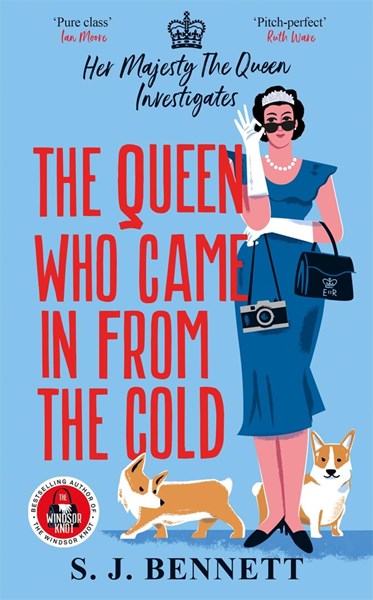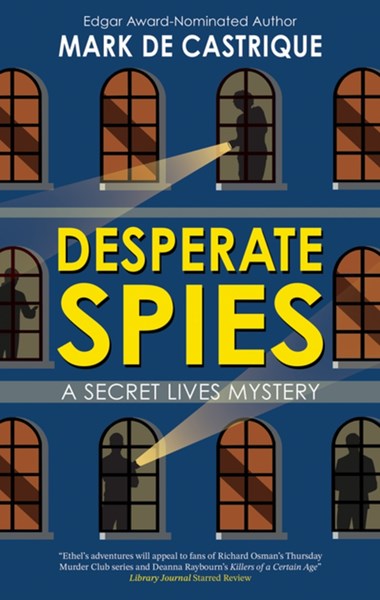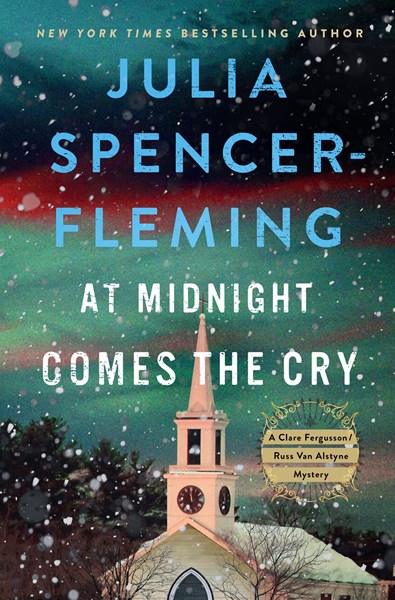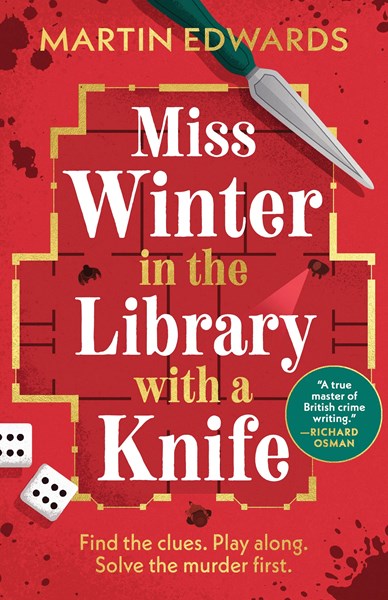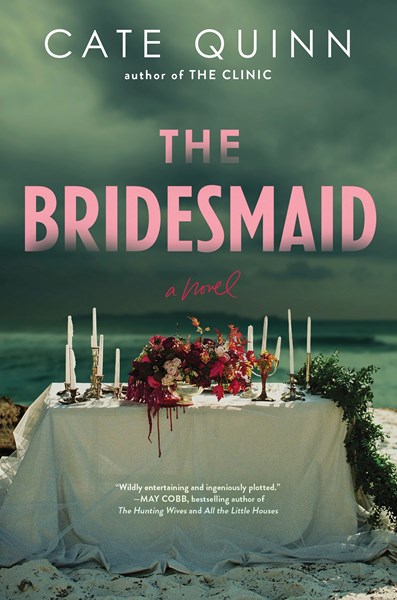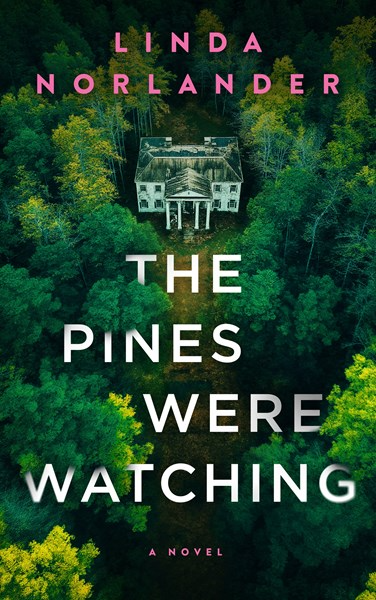This fifth in the series featuring Queen Elizabeth as an amateur sleuth is even more credible, more captivating than its predecessors—and they were awfully good. It’s 1961, deep into the Cold War, and the queen is headed north aboard the royal train, along with Princess Margaret and their respective entourages, when one of the ladies-in-waiting claims to have seen a murder unfold from her carriage. Is this sighting for real or a case of ladies-who-drink-too much? The queen, along with her assistant private secretary Joan McGraw—she’s the thread who connects many of the books—takes on the possible murder, which then expands, threatening to spoil the queen’s state visit to Italy. (Here the action moves to the royal yacht, a delightful foray.) Bennett does a fabulous job of balancing the monarch’s role as head of state with her involvement in a tale that exposes the dark side of the post-war world. For fans of The Crown, the Marlow Murder Club series, Miss Marple, and Robert Lacey’s Majesty: Elizabeth II and the House of Windsor.
Mystery & Detective
At 75 years old, retired FBI agent Ethel Fiona Crestwater returns for another case of digging up dirt and showing up perps. Ethel may have hung up her badge, but that does not make her any less active on the cases that impact the people closest to her, especially the steady stream of FBI agents she rents rooms to in her home. When an old colleague calls in a favor, she accepts without question. But as she dives deeper into the case, Ethel discovers that it originates in the very sting-operation-gone-bad that sent her into retirement, involving the murder of a college student and the Russian mob. Now, 18 years later, Ethel is back on the case with a new team and even more to lose. De Castrique’s (Secret Lives) sharp protagonist must use her skills and resources in the form of some tech-savvy spies, including Jesse, her beloved double-first-cousin-twice-removed, to keep state secrets out of the wrong hands once and for all. Fans of elderly sleuths will enjoy this political thriller, as well as Richard Osman’s Thursday Murder Club series and Deanna Rayborn’s Killers of a Certain Age.
Clare Fergusson and Russ Van Alstyne are now married and happy despite the innate differences of an ex-pilot Episcopal priest and a now-retired police chief. Son Ethan, eight months old, has a stay-at-home dad as a caregiver and things are relatively smooth until the annual Thanksgiving day parade is beset by white supremacists. Officer Knox, newest on the Miller’s Kill police department, is concerned about the disappearance of Syracuse PD officer Kevin Flynn, who was assigned to a state task force to infiltrate the sort of group that disrupted the parade. When Russ and Knox search the woods, two interesting new characters join their quest: Yixin Zhao, from the state attorney’s office; and Paul Terrance, from the park service. Clare is not left out, having taken on the task of saving an abused young mother whose husband is part of a supremacist group, and her child. With great outdoor scenes, tight plotting, and appealing characters, this will hold readers’ attention and leave them hungry for more.
In a clever standalone homage to Agatha Christie and other Golden Age authors, Edwards (Rachel Savernake series) invites “external observers” (i.e., readers) and “analysts” (reviewers) to participate in an interactive puzzle mystery-within-a-mystery set in a remote, snowbound Yorkshire village. The mysterious Midwinter Trust has brought six down-on-their-luck people with connections to crime fiction (including washed-out author Harry Crystal and laid-off book publicist Poppy de Lisle) to Midwinter village in the rugged Pennines to solve a fictional murder over the Christmas holidays under the close supervision of six Midwinter Trust employees. But the game soon goes awry when one of the guests, podcaster Baz Frederick, is found dead in a frozen creek; it is determined that he fell accidentally. But two more deaths are more than coincidental. Is a killer on the loose? As the players struggle to solve both the actual murders and the fictional one, readers can apply their own detective skills in deciphering the clues the author sprinkles throughout the podcast excerpts, text messages, journal entries, webpage excerpts, and third-person narrative. He even provides a Cluefinder (a nod to Golden Age detective fiction) but warns sternly that readers who cheat will be disqualified. If you love to play Clue and are a fan of atmospheric cozies, this is a fun, diverting read.
A quirky forensics expert and an undercover NYPD detective are thrown together here to solve a murder. Adrianna Kensington, daughter of nightclub kingpin Leopold Kensington, is putting together the wedding of the century on the family’s private island, Elysium, while her husband-to-be, tech bro Mark Li, gathers sponsorship deals. Her bridesmaids are all fellow alums of Kensington Manor, an elite all-girls school whose motto is “Discipline, Self-Restraint, and Godliness”—and all of them were with Dri three years ago when she was kidnapped and held captive for three days after her 21st birthday bash at Elysium. When crime-podcaster and bridesmaid Simone is found dead days before the wedding, everything is at risk—Adrianna’s reputation, social-media money, and the whole Kensington empire—and the kidnapper could be after the bride again. Holly was the forensics side of the podcast, and is asked to substitute for Simone at the wedding. Fitzwilliam, a cop as preppy as Holly is goth, tags along as her assistant. The story is told from alternating views of the wedding party, allowing readers to experience the cut-throat world of mean girls, reality-show nuptials, and bridezilla moments. A dark historical twist in the tropical paradise setting adds depth to this high-flying tale of money, murder, and secrets.
Set in 1903 Pasadena and told through the eyes of 18-year-old Ryunosuke “Ryui” Wada, who has recently arrived from Yokohama, Japan, this novel is rich in dualities. An orphan, Ryui is fascinated by the world around himself—including Jack, his talented roommate and photographer and Gigi, a beautiful seamstress. Trained as an artist, Jack manages to find work in Pasadena’s art community as an apprentice, a job that takes him all over town. “In America, or perhaps especially in California, people could be transformed into anyone they dreamed of being.” Pasadena is rife with cultural appropriation; one of the personas Ryui encounters involves young white women re-creating Japanese culture, “which made me feel uneasy and confused,” Ryui notes. But when he and Jack are hired by Toshio Aoki, Pasadena’s best-known Japanese artist, to recover a missing painting (“I could be the first Nipponese detective in this country,” crows Jack) they willingly enter a world where danger abounds and real historical figures have a role. Poignant, marvellously well imagined, and deeply moving, this latest from Hirahara, author of the Edgar Award-winning Mas Arai series, and more recently the writer of Clark and Division and Evergreen, is sure to engage fans of historical fiction.
Life in a small town in Minnesota is not supposed to involve complex crimes in the middle of a heat wave, at least that’s how Sheriff Red Hammergren feels, but when missing public-health nurse Joanie Crea’s body is found on the run-down estate of the formerly wealthy Grandgeorge family, tensions and suspicions run away with the locals. There is little help coming from Joanie’s rigid, bureaucratic robot of a boss or her glad-handing, church deacon of a husband. The body of a second woman is found and information from her abused and recently beaten young son may hold a key. A mystery man with a green jacket, missing funds, and long-held secrets all play with Red’s sixth sense, making her feel that the solution is just beyond her grasp. Help comes from Red’s poker-playing buddies and Waltz, a crime scene tech, but her indomitable need to solve the crime is primary. This is a deeply atmospheric and compelling read. We can only hope for more from the series.
Beautiful, upstate New York, small town Cape Vincent is a place where everybody knows one another. When famous retired hockey player Mikko Helle buys a waterfront house and completely renovates it, he hires Nicole Durham, a local woman, to clean before he moves in. She finds a young woman secretly living inside the house, then the police investigate and discover the remains of another young woman in the basement. With a string of bizarre thefts of items that seem to have no value, the squatter in Helle’s house appears to be the perfect suspect for both the break-ins and the murder. Suspicions mount and trust disappears when Nicole learns about her husband’s surprising connection to the unexpected house guest, the dead body, and Helle’s secret business dealings. How do you discover the truth when everything is built on lies? Wegert creates a vivid town and realistic inhabitants with this taut and compelling mystery. Comparisons to Gillian Flynn’s Sharp Objects and books by Jane Harper and Lucy Foley are warranted
Cordelia West lives a pretty simple life. A devoted young Dallas Public librarian, she likes to keep her past just that: in the past. This includes her mother, a former alcoholic, who pretty much wrecked her childhood (they’re now on better terms). But when she receives a letter from great-aunt Penelope—a relative she has never heard of—Cordelia can’t ignore it. She’s been named sole heir to Penelope’s estate back in their hometown of Sarsaparilla Falls, Texas, a place she has assiduously avoided the past few decades. Turns out her inheritance pretty much consists of the Chickadee Motel, which the will stipulates can’t be sold until all residents leave or pass away. So off she goes to Sarsaparilla to see how she can rid herself of these tenants. Cordelia is savvy, and soon after arriving, she figures out the motel is a brothel, with three over-60 sex workers—Daisy, Arline, and Belinda Sue—AKA the Chicks, all eager for Cordelia to sign on as madam. This is the backstory, which is absolutely delightful, but it’s just a launching pad for the rest of the novel, which features extortion, accidental murder, poisoning, blackmail, corrupt developers, a beguiling romantic subplot, and so much more. Lane has created a fascinating world populated with extraordinary characters. Here’s hoping we all meet again.
While this is the 11th in a long-running series, readers can ignore all the threads of the ongoing story and only attend to the current bizarreness of a birdwatching tour occurring in wintry Nebraska, and immediate family drama. Kate Fox is preparing for an incoming blizzard when the sheriff calls to tell her that a van of birdwatchers has run off the road and needs rescuing. All local first responders are otherwise occupied, so Kate, sister Louise, and friend Deenie marshal forces in true midwestern fashion and take the stranded group to the local high school to ride out the storm. Louise, a miracle worker of sorts, arrives with enough food, equipment, and know-how to feed and provide beds for the group, though perhaps not to the visitors’ snobby standards. This is a record storm, and they are truly stuck, but however prepared they are, murder is not something that is expected. With homage to Agatha Christie and old-fashioned library books, the ordeal is survived, and the crime is solved in this oddly retro and engaging locked-room mystery.

